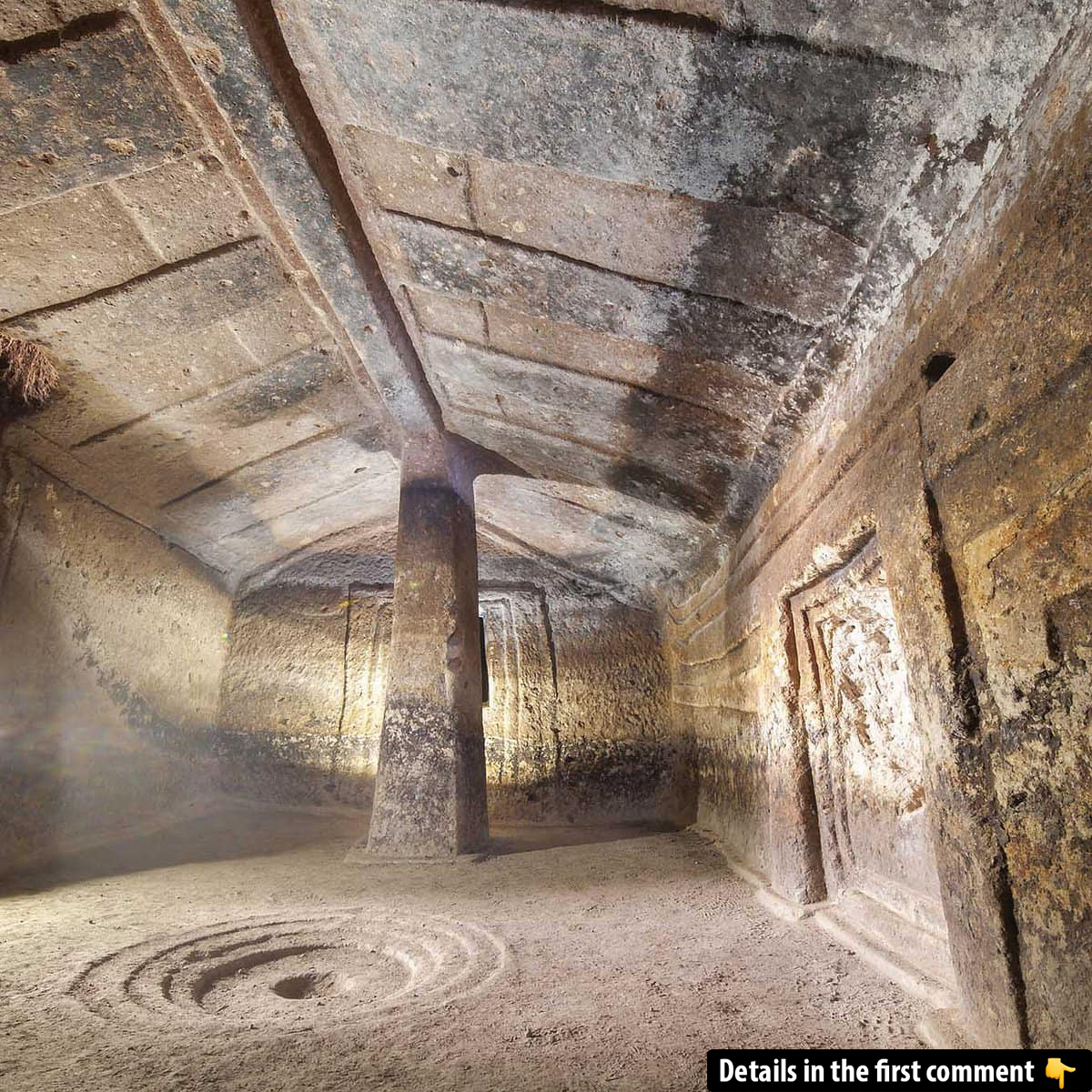The Domus de Janas S’Incantu in Sardinia is an extraordinary archaeological site that offers a glimpse into the ancient rituals of prehistoric humans. Carved into rock and adorned with intricate symbols, this funerary cave reveals the spiritual practices of the time. Thought to be the homes of fairies according to Sardinian mythology, these tombs symbolize the passage from life to death. The site continues to captivate researchers, providing new insights into the beliefs and rituals that shaped ancient Sardinian culture.
The Domus de Janas: A Symbolic and Sacred Space
The term Domus de Janas, meaning “Houses of the Fairies” in Sardinian, refers to a group of rock-cut tombs, so named because, according to Sardinian mythology, they were believed to be the homes of fairies who hid their treasures within. These underground tombs are unique in their design, as they symbolize the maternal womb, an iconic motif across ancient cultures. In this sacred space, bodies were carefully placed in a fetal position, evoking the cycle of life, death, and rebirth, much like the state of being in the womb. This connection to the maternal womb goes beyond symbolism; it represents a metaphysical journey through life and death, where the dead are cared for in the same way newborns are nurtured in the early stages of life.
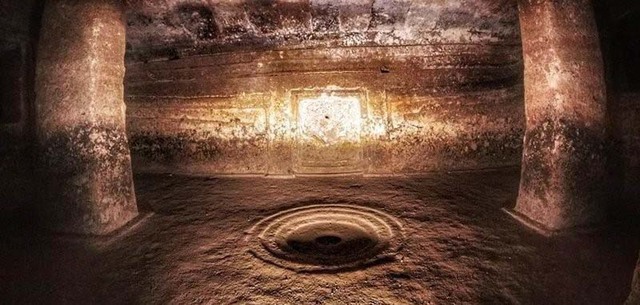
At the Domus de Janas S’Incantu, the bodies were covered in red ochre—an ancient practice meant to mirror the blood of the womb, further underscoring the connection between life and death. The bodies were laid curled up, reinforcing the concept of renewal. Alongside them, small figurines of the Goddess were placed in their right hands, acting as protectors during the passage from death to rebirth.
Video
Check out the video to explore the Domus de Janas s’Incantu Putifigari. This ancient site offers a glimpse into Sardinian history and its mysterious past!
The Architecture and Layout of the Domus de Janas S’Incantu

The architectural complexity of Domus de Janas S’Incantu is striking for its time. The cave consists of eight rooms, some of which are remarkably simple, while others are more intricate, reflecting a process of evolution over time. It is thought that the site underwent renovations and expansions over millennia, with later generations adding to its complexity. Some of these rooms were used for specific ritual functions, while others served as a place of rest for the deceased.
The layout of the structure itself is a testament to the advanced understanding of spatial planning by the ancient Sardinians. The ceiling of the main chamber is carved in bas-relief, designed to simulate the wooden trusses of pre-Nuragic huts. This design is not only an artistic reflection of the ancient world but also shows the connection between the sacred burial chamber and the everyday lives of the people.
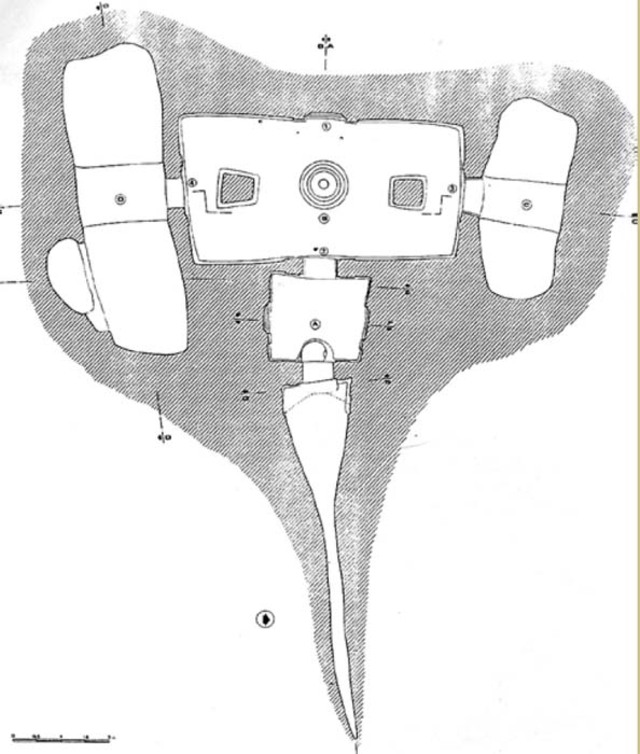
In the center of the chamber, there is a hearth with concentric rings and a small cup, likely used for placing votive offerings. This feature underlines the ritualistic purpose of the site, where fire was used to symbolize both life and death. It is believed that this hearth played a crucial role in the ceremonies associated with the burial process, where offerings were made to the spirits of the deceased.
The Artwork and Decorations
The artistic decorations found in the Domus de Janas S’Incantu are integral to understanding the ritual practices associated with this site. The walls are adorned with motifs created through sculpture, engraving, and painting. These motifs are thought to have held powerful ritual and propitiatory significance. Among the most striking features are the bull’s horns, which extend across the entire width of the back wall, resembling the shape of a boat. These horns are not only decorative but also symbolize strength, fertility, and the afterlife.

A “false door” is carved into the wall opposite the entrance to the main chamber. This false door, originally covered with paintings, is delimited by a triple frame and flanked by two large pilasters. It is a powerful symbolic element, representing the passageway between the living world and the world of the dead. This false door may have served as a ritual gateway, allowing the deceased to transition into the afterlife.
The intricate carvings and paintings are evidence of the deeply rooted cultural and religious traditions of the time. The careful attention to detail and the symbolic choices made in the artwork suggest a highly organized and spiritual society that placed great importance on the afterlife.
Archaeological Findings and Layers of Occupation
The history of the Domus de Janas S’Incantu is marked by multiple layers of occupation. The site was first identified by Sebastiano Porcu in 1985, and further excavation revealed significant finds. Archaeologists discovered ceramic and lithic fragments from the Ozieri culture, dating back to the early Eneolithic period. These artifacts suggest that the site was in use during the late Neolithic to early Eneolithic period, around 4,400 to 2,500 BCE.
The multiple layers of occupation reflect the ongoing ritual significance of the site, with each generation adding to the complex history of the tomb. These findings offer a snapshot of the ancient people’s daily and spiritual life, providing crucial context for understanding the development of Sardinian society during this period.
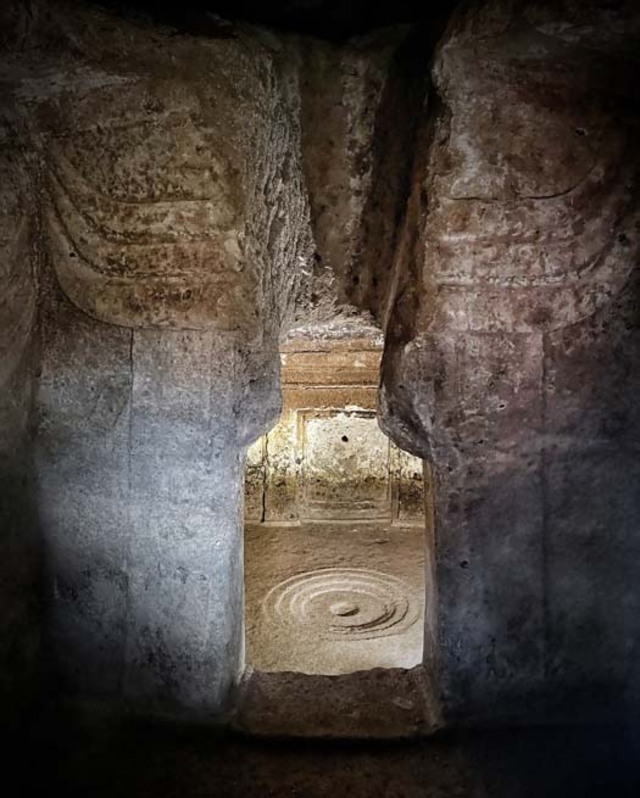
The Vandalism and Conservation Challenges
Despite the importance of the Domus de Janas S’Incantu, the site has faced significant challenges in terms of preservation. Vandalism has damaged and eroded some of the walls, especially the painted surfaces, making conservation efforts all the more crucial. Humidity and condensation have also contributed to the deterioration of the paintings, highlighting the ongoing need for careful restoration and protection.
Efforts to conserve the site have included the installation of protective measures and continued monitoring of the environment to prevent further damage. The site’s historical and cultural value has driven efforts to ensure that it remains preserved for future generations, allowing continued research and appreciation of its significance.
Historical Context and Discoveries
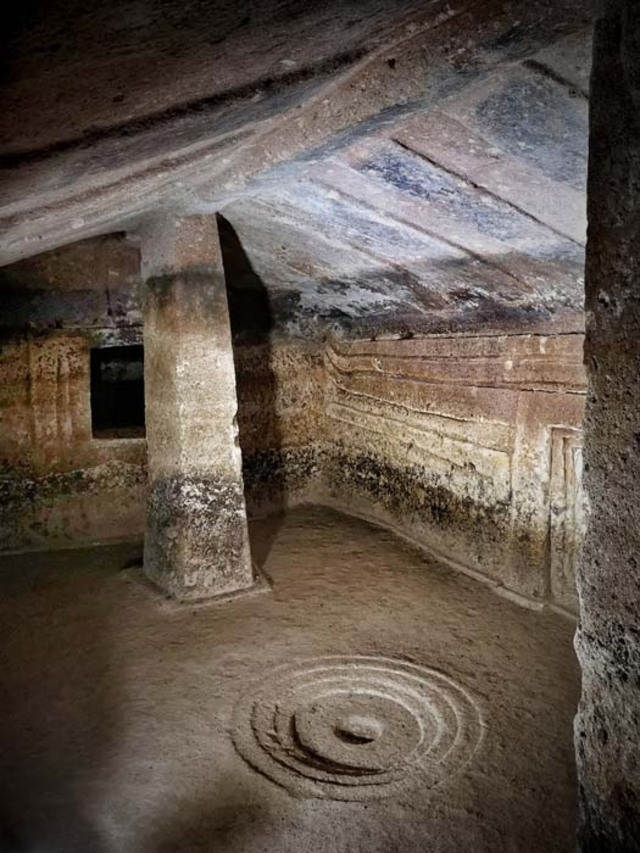
The Domus de Janas S’Incantu, like many other tombs in Sardinia, is a window into a distant past, offering insight into the burial and ritual practices of the ancient Sardinians. The discovery of this tomb helps us understand the evolution of burial traditions in the Mediterranean, shedding light on the spiritual beliefs that shaped their world.
The tomb’s discovery by Sebastiano Porcu, and subsequent excavation by Giovanni Maria Demartis in 1989, marked the beginning of a deeper understanding of the site’s significance. The structure has since become a key archaeological location, providing a wealth of information about prehistoric Sardinia and the role of the Domus de Janas in shaping the island’s cultural heritage.
Video
Watch the video to discover the Domus de Janas in Settimo San Pietro, an ancient chamber tomb. This fascinating site reveals secrets of ancient Sardinian burial practices!
Conclusion
The Domus de Janas S’Incantu is not just a funerary site; it is a profound expression of ancient spiritual and cultural practices. Through its architecture, artwork, and artifacts, it offers a glimpse into the lives of the prehistoric people of Sardinia, showing their deep connection to the earth and the afterlife.
The rich symbolic motifs, including the bull’s horns and the false door, provide a powerful insight into the religious and ritualistic traditions of early Sardinian culture. As preservation efforts continue, the Domus de Janas S’Incantu will remain a crucial part of understanding the ancient Mediterranean world, reminding us of the enduring power of human innovation and spirituality.
